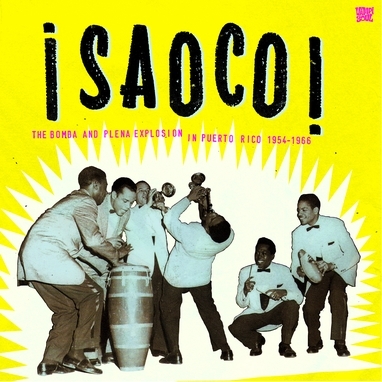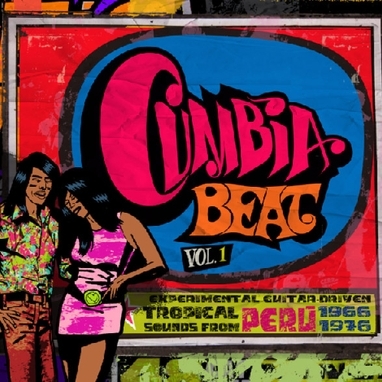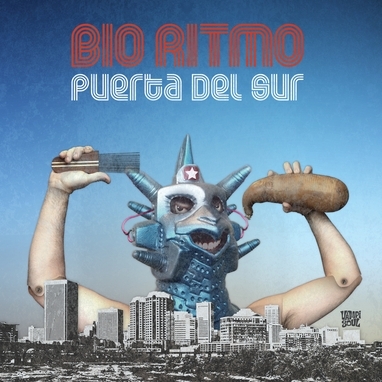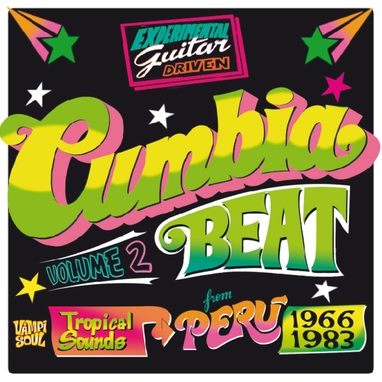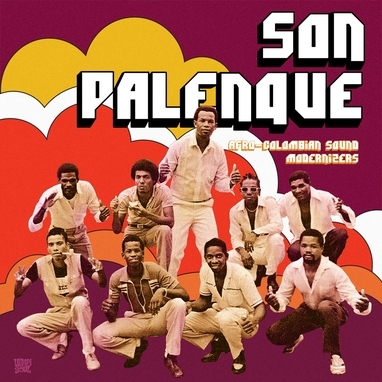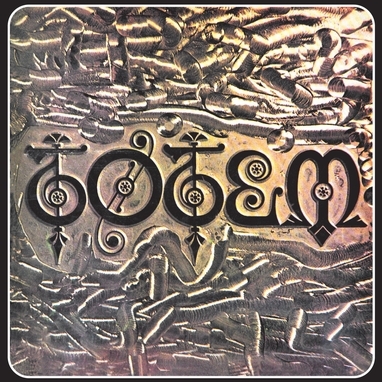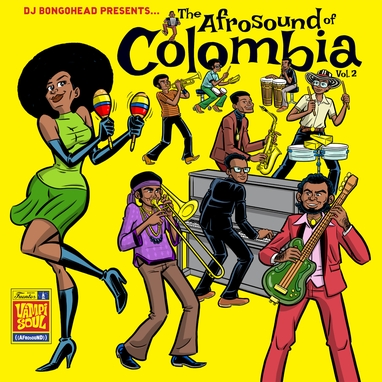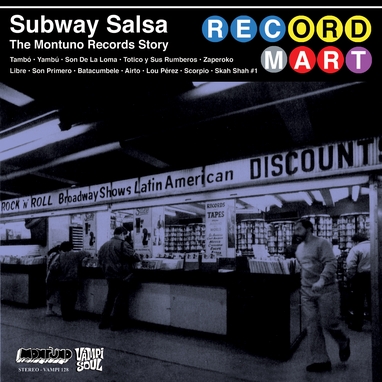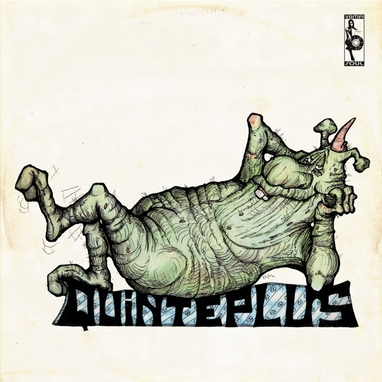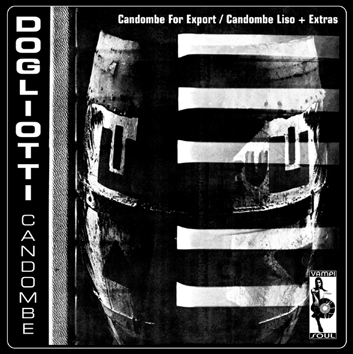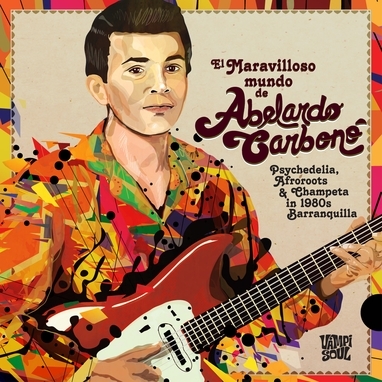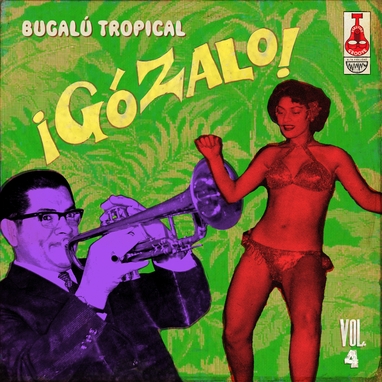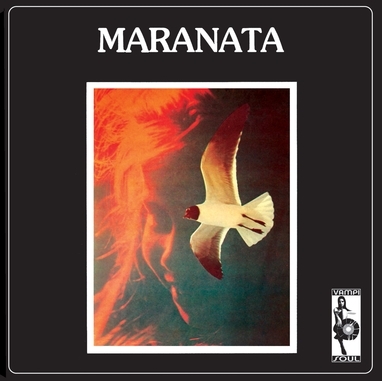¡Saoco! Vol 1
32,00€
Vampisoul
¡Saoco! Vol 1
A comprehensive look at the fascinating music variety of Puerto Rico during the 50s and 60s, which would lead the way to the subsequent salsa scene worldwide. The selection focuses on the rhythms of bomba and plena, island traditions that reached tremendous popularity and enriched the field of tropical music with a clearly Puerto Rican character. Extensive liner notes by compiler Yannis Ruel illustrated with original artwork and memorabilia.
The Bomba and Plena Explosion in Puerto Rico 1954-1966 Cortijo y su Combo with Ismael Rivera, and Mon Rivera with his tongue twisters and trombones, are pioneers of a story that opened up the way to the salsa movement. With an unprecedented mix of flavours and Afro-West Indian rhythms, their dance proposals competed with the best tropical orchestras of the 50s and 60s. The legendary legacy of these Puerto Rican orchestras, however, hadn’t been the subject of a proper retrospective until now. In the case of Cortijo and Ismael, it’s a cultural legacy related to the “third root”, or African contribution, in Puerto Rico’s Caribbean culture. Since its birth in the year 1954 until today (half a century after its break up in 1962), Cortijo’s combo and its stellar singer, Ismael Rivera, have been the best exponents of a modern, orchestrated and commercial way of performing bomba and plena, Afro-Puerto Rican genres in whose tradition they had been raised in the capital’s neighbourhood of Santurce. To these native rhythms they added other Caribbean ingredients which were popular at the time, creating an integrating and innovative proposal that many consider the greatest precedent of the salsa movement that would emerge years later in New York. In only eight years of existence, the group became hugely successful in Puerto Rico and New York, the West Indies and part of Latin America – particularly Panama, Venezuela, Colombia and Peru – and even Europe. With percussions upfront, Cortijo y su Combo were a tight mess of rhythms, expressive even in the shaking and dancing of the band members while they performed their choreography on stage. This compilation looks at the importance of Cortijo and Ismael in the context of the time, contrasting their recordings with those by other contemporary artists with more or less similar styles. Among them is the essential figure of another great “plenero” and salsa pioneer such as Mon Rivera, known as “El Rey del Trabalengua” (The Tongue Twister King) (due to the comedic way of playing around with syllables to modify the rhythm and sense of a sentence) and for having started the “trombanga” kind of sound, which replaces trumpets and saxophones with trombones. It was a key innovation in the birth of boogaloo and salsa, which particularly inspired Eddie Palmieri and Willie Colón. Although Mon lived a great part of his life in New York (where he emigrated in 1950 and where he recorded all the tracks included in this compilation), he achieved his first hits with a group, Los Ases del Ritmo, that he had formed in his native city of Mayagu?ez, on the west coast of Puerto Rico. These three legends, Cortijo, Ismael and Mon Rivera, are accompanied by other tropical ensembles of the same period – Orquesta Panamericana, Sonora Ponceña, Mario Ortiz & His All Star Band and the singer Chivirico – but also groups and vocalists related to the “jíbara” tradition or country music, whose repertoire includes, apart from seis and aguinaldo, plenas, bombas and guarachas. Its typical instrumentation of strings and accordion, together with its peculiar singing style, offer an interesting contrast with the way in which the tropical orchestras played those same rhythms. Yannis Ruel
Productos relacionados
32,00€
A comprehensive look at the fascinating music variety of Puerto Rico during the 50s and 60s, which would lead the way to the subsequent salsa scene worldwide. The selection focuses on the rhythms of bomba and plena, island traditions that reached tremendous popularity and enriched the field of tropical music with a clearly Puerto Rican character. Extensive liner notes by compiler Yannis Ruel illustrated with original artwork and memorabilia.
The Bomba and Plena Explosion in Puerto Rico 1954-1966 Cortijo y su Combo with Ismael Rivera, and Mon Rivera with his tongue twisters and trombones, are pioneers of a story that opened up the way to the salsa movement. With an unprecedented mix of flavours and Afro-West Indian rhythms, their dance proposals competed with the best tropical orchestras of the 50s and 60s. The legendary legacy of these Puerto Rican orchestras, however, hadn’t been the subject of a proper retrospective until now. In the case of Cortijo and Ismael, it’s a cultural legacy related to the “third root”, or African contribution, in Puerto Rico’s Caribbean culture. Since its birth in the year 1954 until today (half a century after its break up in 1962), Cortijo’s combo and its stellar singer, Ismael Rivera, have been the best exponents of a modern, orchestrated and commercial way of performing bomba and plena, Afro-Puerto Rican genres in whose tradition they had been raised in the capital’s neighbourhood of Santurce. To these native rhythms they added other Caribbean ingredients which were popular at the time, creating an integrating and innovative proposal that many consider the greatest precedent of the salsa movement that would emerge years later in New York. In only eight years of existence, the group became hugely successful in Puerto Rico and New York, the West Indies and part of Latin America – particularly Panama, Venezuela, Colombia and Peru – and even Europe. With percussions upfront, Cortijo y su Combo were a tight mess of rhythms, expressive even in the shaking and dancing of the band members while they performed their choreography on stage. This compilation looks at the importance of Cortijo and Ismael in the context of the time, contrasting their recordings with those by other contemporary artists with more or less similar styles. Among them is the essential figure of another great “plenero” and salsa pioneer such as Mon Rivera, known as “El Rey del Trabalengua” (The Tongue Twister King) (due to the comedic way of playing around with syllables to modify the rhythm and sense of a sentence) and for having started the “trombanga” kind of sound, which replaces trumpets and saxophones with trombones. It was a key innovation in the birth of boogaloo and salsa, which particularly inspired Eddie Palmieri and Willie Colón. Although Mon lived a great part of his life in New York (where he emigrated in 1950 and where he recorded all the tracks included in this compilation), he achieved his first hits with a group, Los Ases del Ritmo, that he had formed in his native city of Mayagu?ez, on the west coast of Puerto Rico. These three legends, Cortijo, Ismael and Mon Rivera, are accompanied by other tropical ensembles of the same period – Orquesta Panamericana, Sonora Ponceña, Mario Ortiz & His All Star Band and the singer Chivirico – but also groups and vocalists related to the “jíbara” tradition or country music, whose repertoire includes, apart from seis and aguinaldo, plenas, bombas and guarachas. Its typical instrumentation of strings and accordion, together with its peculiar singing style, offer an interesting contrast with the way in which the tropical orchestras played those same rhythms. Yannis Ruel
Productos relacionados
¡Saoco! Vol 1
A comprehensive look at the fascinating music variety of Puerto Rico during the 50s and 60s, which would lead the way to the subsequent salsa scene worldwide. The selection focuses on the rhythms of bomba and plena, island traditions that reached tremendous popularity and enriched the field of tropical music with a clearly Puerto Rican character. Extensive liner notes by compiler Yannis Ruel illustrated with original artwork and memorabilia.
The Bomba and Plena Explosion in Puerto Rico 1954-1966 Cortijo y su Combo with Ismael Rivera, and Mon Rivera with his tongue twisters and trombones, are pioneers of a story that opened up the way to the salsa movement. With an unprecedented mix of flavours and Afro-West Indian rhythms, their dance proposals competed with the best tropical orchestras of the 50s and 60s. The legendary legacy of these Puerto Rican orchestras, however, hadn’t been the subject of a proper retrospective until now. In the case of Cortijo and Ismael, it’s a cultural legacy related to the “third root”, or African contribution, in Puerto Rico’s Caribbean culture. Since its birth in the year 1954 until today (half a century after its break up in 1962), Cortijo’s combo and its stellar singer, Ismael Rivera, have been the best exponents of a modern, orchestrated and commercial way of performing bomba and plena, Afro-Puerto Rican genres in whose tradition they had been raised in the capital’s neighbourhood of Santurce. To these native rhythms they added other Caribbean ingredients which were popular at the time, creating an integrating and innovative proposal that many consider the greatest precedent of the salsa movement that would emerge years later in New York. In only eight years of existence, the group became hugely successful in Puerto Rico and New York, the West Indies and part of Latin America – particularly Panama, Venezuela, Colombia and Peru – and even Europe. With percussions upfront, Cortijo y su Combo were a tight mess of rhythms, expressive even in the shaking and dancing of the band members while they performed their choreography on stage. This compilation looks at the importance of Cortijo and Ismael in the context of the time, contrasting their recordings with those by other contemporary artists with more or less similar styles. Among them is the essential figure of another great “plenero” and salsa pioneer such as Mon Rivera, known as “El Rey del Trabalengua” (The Tongue Twister King) (due to the comedic way of playing around with syllables to modify the rhythm and sense of a sentence) and for having started the “trombanga” kind of sound, which replaces trumpets and saxophones with trombones. It was a key innovation in the birth of boogaloo and salsa, which particularly inspired Eddie Palmieri and Willie Colón. Although Mon lived a great part of his life in New York (where he emigrated in 1950 and where he recorded all the tracks included in this compilation), he achieved his first hits with a group, Los Ases del Ritmo, that he had formed in his native city of Mayagu?ez, on the west coast of Puerto Rico. These three legends, Cortijo, Ismael and Mon Rivera, are accompanied by other tropical ensembles of the same period – Orquesta Panamericana, Sonora Ponceña, Mario Ortiz & His All Star Band and the singer Chivirico – but also groups and vocalists related to the “jíbara” tradition or country music, whose repertoire includes, apart from seis and aguinaldo, plenas, bombas and guarachas. Its typical instrumentation of strings and accordion, together with its peculiar singing style, offer an interesting contrast with the way in which the tropical orchestras played those same rhythms. Yannis Ruel
A comprehensive look at the fascinating music variety of Puerto Rico during the 50s and 60s, which would lead the way to the subsequent salsa scene worldwide. The selection focuses on the rhythms of bomba and plena, island traditions that reached tremendous popularity and enriched the field of tropical music with a clearly Puerto Rican character. Extensive liner notes by compiler Yannis Ruel illustrated with original artwork and memorabilia.
The Bomba and Plena Explosion in Puerto Rico 1954-1966 Cortijo y su Combo with Ismael Rivera, and Mon Rivera with his tongue twisters and trombones, are pioneers of a story that opened up the way to the salsa movement. With an unprecedented mix of flavours and Afro-West Indian rhythms, their dance proposals competed with the best tropical orchestras of the 50s and 60s. The legendary legacy of these Puerto Rican orchestras, however, hadn’t been the subject of a proper retrospective until now. In the case of Cortijo and Ismael, it’s a cultural legacy related to the “third root”, or African contribution, in Puerto Rico’s Caribbean culture. Since its birth in the year 1954 until today (half a century after its break up in 1962), Cortijo’s combo and its stellar singer, Ismael Rivera, have been the best exponents of a modern, orchestrated and commercial way of performing bomba and plena, Afro-Puerto Rican genres in whose tradition they had been raised in the capital’s neighbourhood of Santurce. To these native rhythms they added other Caribbean ingredients which were popular at the time, creating an integrating and innovative proposal that many consider the greatest precedent of the salsa movement that would emerge years later in New York. In only eight years of existence, the group became hugely successful in Puerto Rico and New York, the West Indies and part of Latin America – particularly Panama, Venezuela, Colombia and Peru – and even Europe. With percussions upfront, Cortijo y su Combo were a tight mess of rhythms, expressive even in the shaking and dancing of the band members while they performed their choreography on stage. This compilation looks at the importance of Cortijo and Ismael in the context of the time, contrasting their recordings with those by other contemporary artists with more or less similar styles. Among them is the essential figure of another great “plenero” and salsa pioneer such as Mon Rivera, known as “El Rey del Trabalengua” (The Tongue Twister King) (due to the comedic way of playing around with syllables to modify the rhythm and sense of a sentence) and for having started the “trombanga” kind of sound, which replaces trumpets and saxophones with trombones. It was a key innovation in the birth of boogaloo and salsa, which particularly inspired Eddie Palmieri and Willie Colón. Although Mon lived a great part of his life in New York (where he emigrated in 1950 and where he recorded all the tracks included in this compilation), he achieved his first hits with a group, Los Ases del Ritmo, that he had formed in his native city of Mayagu?ez, on the west coast of Puerto Rico. These three legends, Cortijo, Ismael and Mon Rivera, are accompanied by other tropical ensembles of the same period – Orquesta Panamericana, Sonora Ponceña, Mario Ortiz & His All Star Band and the singer Chivirico – but also groups and vocalists related to the “jíbara” tradition or country music, whose repertoire includes, apart from seis and aguinaldo, plenas, bombas and guarachas. Its typical instrumentation of strings and accordion, together with its peculiar singing style, offer an interesting contrast with the way in which the tropical orchestras played those same rhythms. Yannis Ruel

